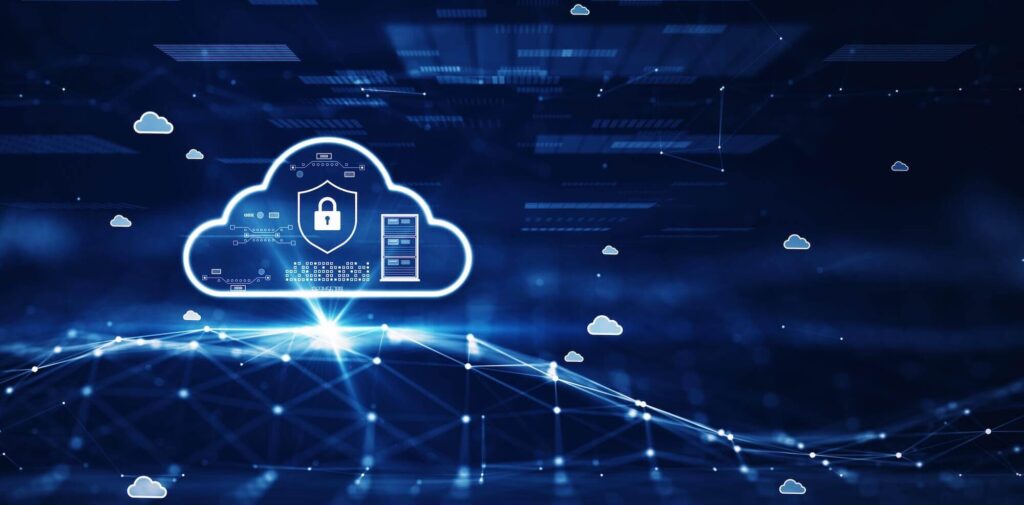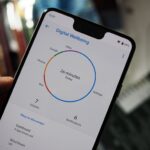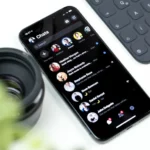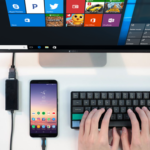
Transfer files to a new Android device these days, transferring your data to a new Android phone isn’t the daunting challenge it once was.
With built-in functions and external apps readily available, switching from either an iPhone or another Android device is now seamless. In this article, we’ll examine all potential avenues for transferring your information with ease.
Transfer large files Manually using a USB
If any data on your phone isn’t classified into the specified categories, you have the option to move it manually. For example, if your device has saved audio files, old podcasts, or essential documents in arbitrary folders; then manual transfer would be a preferable choice
To begin with, utilize one of the top-rated file explorers for Android to inspect your phone’s directories. If you come across any material that you wish to save, there are two courses of action available:
To transfer your phone data to a new device seamlessly, connect them through a USB cable. For those with USB-C ports on their computer, use either the Lightning to USB-C or USB-C to USB-C cable based on your phone model. Transfer all files into one folder for easy access and organization.
In case your new phone has an SD card slot, you could get yourself a SanDisk Extreme microSDXC memory card to transfer data onto and subsequently install it into the device.
Transfer iPhone files to a brand-new Android device
Transferring your data from iPhone to Android can be a frenzied process, but thanks to Google’s Switch To Android app, this task has become much simpler. Simply visit the App Store and install the application; then create or sign in with an existing Google account before following some straightforward on-screen instructions.
You can rely on Switch To Android to lead you through the process of transferring your contacts, photos, videos, calendar details as well as certain device settings. Additionally, it facilitates the transfer of your WhatsApp conversations and gives a notification to disable iMessage for you to receive text messages from iPhone users.
Kindly be informed that Switch To Android exclusively transfers free apps that are concurrently accessible on the Play Store. In case any of your paid applications have an Android version, you might need to buy them again.
Get the Android to iOS Switch App for free download.
Revive your files and information through Google One
By using Google One, you can recover your phone’s configuration settings, call history, contacts list, text messages, and also saved application information including passwords.
To start the process on your previous device just install and access the app by signing in with your Google account credentials; then click the hamburger icon located at the top left corner followed by selecting the “Settings” option from where to select “Manage backup settings”.
Further, turn on the Device data toggle key or any other requirements before tapping the Backup Now button to complete it all!
Upon turning on your new Android phone, it will request you to input your Google account login details. If the device detects a backup saved in Google’s servers, you will be prompted to either use it or not. Select “Yes”.
Consequently, all previously configured settings and installed apps from your old mobile unit should synchronize and download automatically onto the brand-new gadget.
Google One does support photo and video backup, however, it lacks the level of control that Google Photos provides.
Google One is available for download on Android and iOS platforms, with a free version as well as a subscription-based option.
Transfer Bulky Files Using Wi-Fi Direct
If you need to transfer large files such as movies or videos from one Android device to another, using this option is an excellent choice. An inbuilt protocol called Wi-Fi Direct is available on Android phones for this purpose. It functions by enabling one of your devices to serve as an access point while the other becomes a client.
Although the steps for using Wi-Fi Direct may differ across devices, they are generally similar. Access your Settings and navigate to Wi-Fi > Wi-Fi Direct. On Samsung Galaxy phones, head over to Connections in the Settings menu instead of simply going into “Wi-fi,” tap on the three-dot icon located at the top-right corner, and select ‘Wi-Fi direct’.
If Wi-Fi Direct proves unreliable when transferring files between devices made by different manufacturers, it may be wise to install a top-rated third-party file transfer app that utilizes the protocol.
Easily transfer and share your photos and videos with Google Photos
Google Photos is the most effortless and efficient way to transfer your photographs and videos between devices, particularly those captured using your mobile camera. While several apps can serve this purpose, Google Photos stands out as a user-friendly solution.
Ensure that all your albums are backed up when you launch Google Photos for the first time. You might have various device folders, including WhatsApp, Instagram, and Twitter; therefore, it is necessary to manually activate a backup for each folder whose content you wish on your new phone. Typically, the Camera folder gets automatically backed up by default eliminating a need to follow this step unless additional folders are required.
To create a backup of a folder, access Google Photos and tap on the profile icon located at the top-right corner. Proceed to select “Photos settings,” then navigate through “Backup” > “Back up device folders.” Toggle on desired folders for your new Android device while ensuring that Backup is enabled by returning to the previous page.
If Google Photos didn’t come preinstalled on your new phone, you can download it and sign in with your Google account. Your backed-up media will be readily available for viewing on the app and downloading to your device’s gallery.
Get Google Photos for Android and iOS now, with the option to subscribe. It’s free!
Conclusion
Transferring data files from an iPhone to an Android device is now easier with built-in functions and external apps.
There are several options for transferring information, including manual transfer using USB, using Google’s Switch To Android app, recovering files and information through Google One, using Wi-Fi Direct for bulk files, and using Google Photos for easy transfer and sharing of photos and videos.
Manual transfer involves using a file explorer to inspect your phone’s directories and connecting them through a USB cable. Switch To Android transfers free apps from the Play Store, while Google One allows you to recover phone configuration settings, call history, contacts list, text messages, and saved application information.
Wi-Fi Direct allows one device to serve as an access point while the other becomes a client. Google Photos is a user-friendly solution for transferring photos and videos between devices, but it requires manual activation for each folder.





